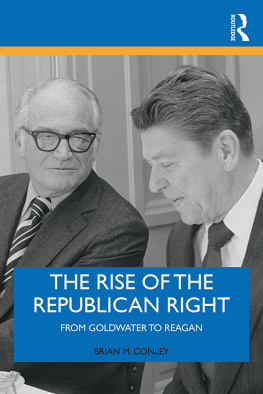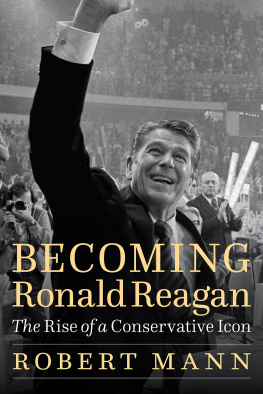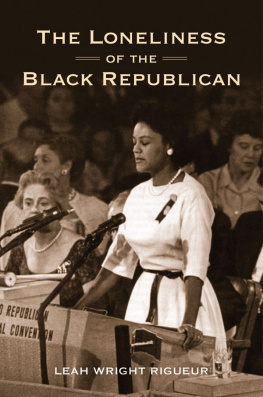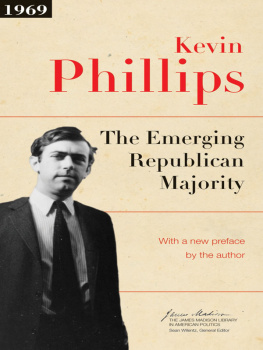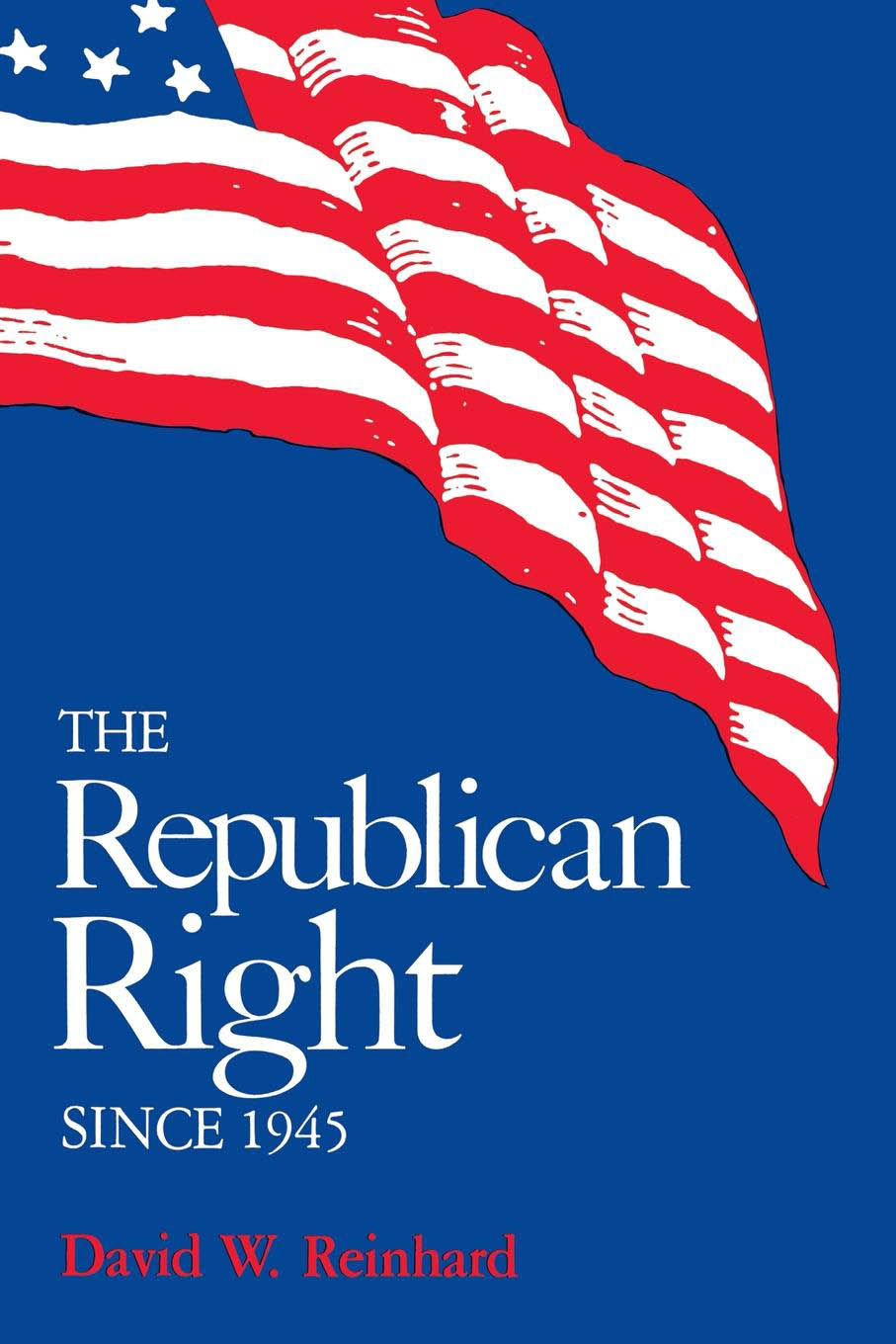THE
Republican Right
SINCE 1945
David W. Reinhard

Coypright 1983 by The University Press of Kentucky
Scholarly publisher for the Commonwealth,
serving Bellarmine College, Berea College, Centre
College of Kentucky, Eastern Kentucky University,
The Filson Club, Georgetown College, Kentucky
Historical Society, Kentucky State University,
Morehead State University, Murray State University,
Northern Kentucky University, Transylvania University,
University of Kentucky, University of Louisville,
and Western Kentucky University.
Editorial and Sales Offices: Lexington, Kentucky 40506-0024
ISBN: 978-0-8131-5449-7
Library of Congress Cataloging in Publication Data
Reinhard, David W., 1952
The Republican Right since 1945.
Bibliography: p.
Includes index.
1. Republican Party (U.S.) 2. ConservatismUnited StatesHistory20th century. 3. United StatesPolitics and government1945-. I. Title.
JK2356.R28 1983 324.2734 82-40460
Contents
For Mom and Dad
Preface
The Republican Right. Few terms in American political history have conjured up more meanings, more emotions, and more myths than this one. But more historical understanding is needed, now that a Right Wing Republican currently presides in the White House over perhaps the most important restructuring of American society since the New Deal.
This is not to imply that contemporaries failed to analyze or sought to ignore the Republican Right. How could they? In much of the postNew Deal period, hard-line Republicans commanded the Republican party in Congress, often enhancing their power by working with conservative southern Democrats. Also, GOP conservatives drew attention by bucking the trends of the era, and political observers constantly speculated about their motivesbenighted obscurantism? ideological or constitutional scruples? economic self- or class-interest? As for historians, much has been written on certain aspects of the Republican RightMcCarthyism, foreign policy, and the presidential campaigns of 1948 and 1952and there are several excellent biographies on Right Wing leaders during the period. But an adequate, full-scale treatment of the Republican Right in the postWorld War II era has been conspicuously missing. This book attempts to fill that gap in American political history.
The major focus of this work is the period from 1945 through 1965. These twenty years represent a natural and tidy period. The year 1945 was crucial for all Americans. Roosevelt had died and World War II had come to an end. But for Right Wing Republicans that year was especially important. Republican conservatives now faced a national and international world wrought by Roosevelt, but without the intimidating presence of that popular figure. By 1965 Right Wing Republicans had confronted this post-Roosevelt world, the foreign policy demand of fighting the Cold War against the Soviet Union, as well as Eisenhowers Modern Republicanism. And, finally, they had nominated their own GOP standard-bearer.
Beginning in 1945, the present work investigates the general doctrine of the Republican Right, and the Republican Rights successful and unsuccessful response to major postWorld War II domestic and foreign policy issues. It attempts to show how GOP conservatives controlled important party posts and how during the various political battles within the party, such as the nomination struggles of 1948, 1952, and 1964, they tried to retain the old-line conservative faith. It also examines the Right Wing response to Eisenhowers Modern Republican administrations, as well as such related subjects as the postwar conservative intellectual movement and the emergence of the Radical Right.
If the current political scene in Washington underscores the importance of an historical understanding of the Republican Right, the existence of many valuable manuscript collections provides the basic material for this first portion of the study. The Robert Taft Papers at the Library of Congress are only the most important of the available collections. The Hoover Papers and related holdings at the Herbert Hoover Presidential Library in West Branch, Iowa, as well as manuscript collections at the Dwight D. Eisenhower Library in Abilene, Kansas, also contain much of value. Besides some rich personal collections, the Olin Library at Cornell University houses the records of the Republican party for part of the period. The papers of important Right Wing figures are found at the Chicago Historical Society, and sections of the Everett Dirksen papers at the Dirksen Center in Pekin, Illinois, were open. These are but a few of the more than thirty-five collections examined during the course of the study. Material found in these collections helped confirm, contradict, and otherwise enhance the accounts and viewpoints found in memoirs, oral history interviews, newspapers, periodicals, government documents, and, of course, works of historical scholarship.
The final two chapters cover the period from 1965 to the inauguration of Ronald Reagan. They differ in content and tone from the preceding ten chapters, which make up the bulk of the book. Although these earlier chapters hardly cover ancient history and may be considered current events by many historians, the contemporary nature of post-1965 America required a slightly different approach. In the last two chapters, therefore, the coverage is less detailed and there is virtually no use of personal papers, which are unavailable for obvious reasons. Moreover, time and perspective are needed to put the events of this most recent period into clearer focus.
Despite the hazards involved in writing contemporary history, it seemed important to bring the history of the Republican Right Wing forward to the beginning of 1981. First, there was the altogether natural desirea desire I hoped the reader would shareto complete the chronological story. Furthermore, the historiographical limitations, though admittedly significant, were not paralyzing. Finally, even if the implications of many post-1965 events remain unclear, these developments can still be considered in the context of the more fully treated period from 1945 through 1965.
Thus, this present work is hardly a definitive treatment of conservative Republicanism in the thirty-five years after World War II; not all issues are examined, not all questions answered. It is a necessarily selective, old-fashioned political narrative that seeks to explain larger social, economic, and political forces and trends by examining the ideas and activities of some of the major political actors.
A study of almost any movement presents the problem of definition. Who is included? Who is excluded? And why? These problems are compounded when one is examining the world of American politicians. Of course, certain common positions, outlooks, or dispositions characterized the Republican Right Wing throughout the postWorld War II period and will become obvious during the course of this book. Generally, conservative Republicans stood in arch opposition to the domestic, foreign, and political changes wrought by Franklin Roosevelt and later the Great Society of Lyndon Johnson. They opposed a strong chief executive like FDR and a powerful federal government that overregulated business and meddled in the affairs of state and local governments. They supported only limited government intervention in Americas capitalistic economy. Federal budgets should be kept low (and in balance), along with federal taxes. In foreign affairs, Right Wing Republicans generally favored a strong American defense that relied heavily on air and sea power, and a foreign policy that allowed the United States to go it alone in pursuit of its own national interest. Fierce anticommunism was also a hallmark of conservative Republicanism, and this influenced their foreign and domestic programs. Right Wing Republicans consistently argued that the Republican party had to offer a real choice to Democratic domestic liberalism and internationalism.



